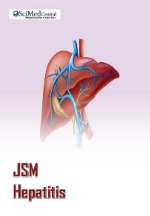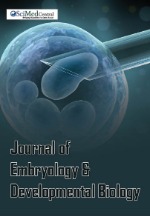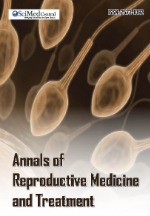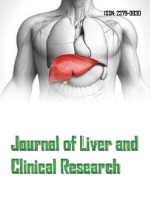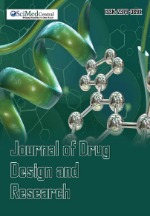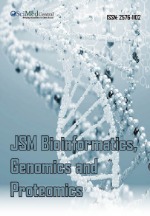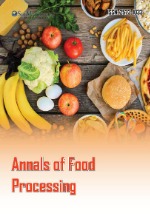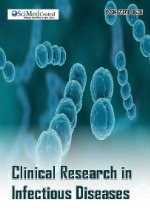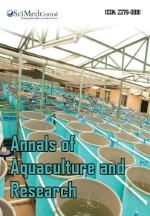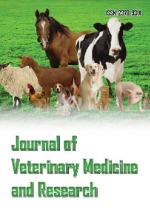Review on the Organic Agriculture as a Strategy for Achieving Food Self-Sufficiency
- 1. Department of Plant Sciences, College of Agriculture and Veterinary Medicine, Dambi Dollo University, Ethiopia
- 2. Ethiopian Institute of Agricultural Research, Kulumsa Agricultural Research Center, Ethiopia. Assela(Ethiopia)
CONCLUSION AND RECOMMENDATION
Organic Agriculture is production management system which promotes and enhances agro ecosystem health, including bio diversity, biological cycles and soil biological activity and this accomplished by using on farm agronomic, biological and mechanical methods in exclusion of all synthetic off-farm inputs .It works in together with nature rather than against it. This involves using techniques to achieve good crop yields without harming the natural environment or the people who live and work in it and helps small scale farmers to achieve food from their domestic production without the use of chemical fertilizers, pesticides and herbicides. In another way organic agriculture is kind of agricultural that provide the consumers, with fresh, tasty and reliable food while regarding natural life cycle systems. Therefore, to achieve food self-sufficiency the policy should focus on small scale-organic agriculture in addition to promote commercial agriculture. Specifically, the government should control land use for organic agriculture, improve the efficiency of water management and other supports, stimulate awareness of natural resource and environment conservation and encourage activities to maintain community culture of helping one another. Organic agriculture is very important as strategy for achieving food self-sufficiency through use of organic sources, however, there are a gap in using organic agriculture .Therefore; to reduce these gaps the following recommendation has been proposed.
• Most of the farmers did not know the significance of organic agriculture due to lack of awareness as a result farmers were not used for food production, so Provision of awareness and support to farmers are very crucial in order to benefit them through use of organic agriculture such as vermicomposting, Bio-fertilizer, compost and other technologies of organic agriculture.
• Also a focus on building strong relationships both within the farmers group and linkages with local and wider stakeholders may enhance long-term sustainability of organic agriculture.
• Increasing public awareness of the value of organic agriculture • Implementing policy changes that ensure organic farming meets the rapidly growing consumer demand • Conducting research to arrive necessary technological advances.
• A new policy to support organic farmers and organic food industry is needed.
• Government attention and special consideration should be needed for better adopting of organic agriculture as strategies.
• The government should increase research that is responsive to organic farmer’s needs, integrate organic programs into every federally funded university, create farm safety net and transition assistance programs that works for the growers. • Provide closer links between farmers, researchers and extension services for better adoption of Organic agriculture.
• Reform extension service and agriculture education and re-train staff both in knowledge and methodology
• Support farm based research, Farmer-to-Farmer exchange and other participatory methods.
REFERENCES
1. IFOAM. Principles of Organic Agriculture. 2013
2. Lotter DW. Organic agriculture. J Sustainable Agriculture. 2003; 21: 59-128.
7. Boral E, Sachin C, Aranda E. Earthworm activity affects soil aggregation. Soil Biology and Biochemistry. 1997; 29: 431-439.
10.Vessey JK. Plant growth promoting Rhizobacteria as biofertilizers. J Plant Soil. 2003; 25: 511-586.
13.Vessey JK. Plant growth promoting Rhizobacteria as biofertilizers. J Plant Soil. 2003; 25: 511-586.
23.Chhonkar PK. Organic farming myth and reality, in Proceedings of the FAI Seminar on Fertilizer and Agriculture Meeting the Challenges. New Delhi, India. 2002.
24.Kalyan S. Development of sustainable farming system model for the Irrigated agro-ecosystem of Eastern UP, ICAR, Ad-hoc project, Final Annual Report, Department of Agronomy, Institute of Agricultural Science, Banaras Hindu University, Varanasi, India. 2005.
26.Pal M. Basics of Agriculture. Jain Brothers, New Delhi, India. 2002.
29.Tripathi SC, Chauhan DS, Sharma RK, and Dhillon OP. Productivity and economics of different wheat (Triticum aestivum) based cropping sequences, Indian J Agronomy. 2009; 44: 237-241.
30.Sangakkara R, Bandaranayake P, Dissanayake U, and Gajanayake JN. Organic matter addition in organic farming-impact on root development and yields in maize and cowpea over dry seasons,” in Proceedings of the 2nd Scientific Conference of the International Society of Organic Agriculture Research (ISOFAR ‘08), held at the16th IFOAM Organic World Conference in Cooperation with the International Federation of Organic-Agriculture Movements IFOAM and the Consorzio ModenaBio, Modena, Italy. 2008.
31.Minhas RS, Sood A. Effet of inorganic and organic on yield and nutrients uptake by three crops in rotation in aid alfisol. J Indian Soc Soil Sci. 2004.
32.Gaur AC, Nilkantan S, and Dargan KS. Organic Manures, ICAR, New Delhi, India. 2002.
34.Subbiah S and Kumaraswamy K. Effect of manure-fertilizers on the yield and quality of rice and on soil fertility.”Fertilizer News. 2000; 45: 61-68.
36.Kalyan S. Integrated use of industrial and farm wastes with mineral and bio-activators for sustained rice productivity in rice based ecosystem of Eastern Uttar Pradesh, First Annual Report, NATP, ICAR, and New Delhi, India. 2003.
37.Gaur AC. Handbook of Organic Farming and Biofertilizers. Ambica Book Publication. Jaipur, India. 2006.
Abstract
Organic Agriculture is a production system which avoids or largely excludes, the use of synthetic fertilizers, pesticides, growth regulators, and livestock feed additives. It is proposed as a promising approach to achieving sustainable food systems, but its feasibility is also contested. We use a food systems model that addresses agronomic characteristics of organic agriculture to analyze the role that organic agriculture could play in sustainable food systems. Among the basic types of organic agriculture vermicomposting and bio fertilizers are the latest technologies that farmers did not used widely for production. Hence, uses of the latest technologies are very important to achieve food self-sufficiency and the policy should focus on small scale-organic agriculture in addition to promote commercial agriculture. Specifically, the government should control land use for organic agriculture, improve the efficiency of water management and other supports, stimulate awareness of natural resource and environment conservation and encourage activities to maintain community culture of helping one another. Therefore, this review paper was highlighted organic agriculture as a strategy for achieving food self-sufficiency
Keywords
• Organic Agriculture; Food Self-sufficiency; Production; Synthetic fertilizers; Growth regulators; Livestock feed additives
INTRODUCTION
Organic Agriculture is a production system which avoids the use of synthetic fertilizers, pesticides, growth regulators, and livestock feed additives [1]. It includes all agricultural systems that promote the environmentally, socially and economically sound production of food and fibers. These systems take local soil fertility as a key to successful production. By respecting the natural capacity of plants, animals and the landscape, it aims to optimize quality in all aspects of agriculture and the environment. It also dramatically reduces external inputs by refraining from the use of chemo-synthetic fertilizers, pesticides, and pharmaceuticals. Instead it allows the powerful laws of nature to increase both agricultural yields and disease resistance.
The use of organic in reference to agricultural production and food is legally constrained in many countries, and some certification agencies have more stringent compliance requirements than others [2]. Many farmers in less developed countries may practice organic agriculture by default based on their traditional methods of production. However, it is useful to provide a general definition of organic agriculture to indicate briefly what the production systems are designed to achieve. Today, increasing population pressure has forced many countries to use chemicals and fertilizers to increase the farm productivity for meeting their ever-increasing food requirements. The prolonged and over usage of chemicals has, however, resulted in human and soil health hazards along with environmental pollution. Farmers in the developed countries are, therefore,being encouraged to convert their existing farms into organic farm.
The key factors affecting consumer demand for organic food is the health consciousness and the willingness of the public to pay for the high-priced produce. In general, consumers of organic products are educated, and health conscious group spurred by strong consumer demand, generous price premium, and concerns about the environment [3]. Because of these hidden benefits, conventional growers are turning to organic agriculture. In Europe, government policies aim to stimulate the organic sector through subsidies, consumer education, and support in the form of research, education, and marketing. Thus, this review was carried out with the following objective:
To review Organic Agriculture as a strategy for achieving food self-sufficiency.
LITERATURE REVIEW
Concepts of Organic Agriculture
Organic agriculture is a production management system excluding of all synthetic off-farm inputs but rely upon onfarm agronomic, biological and mechanical methods like crop rotations, crop residues, animal manures, off-farm organic waste, mineral grade rock additives and biological system of nutrient mobilization and plant protection, etc which promotes and enhances biodiversity, biological cycles and agro-ecosystem health [4]. It is a system which avoids use of synthetic inputs such as fertilizers, pesticides, hormones, feed additives and to the maximum extent feasible rely up on crop rotations, crop residues, animal manures, off farm organic waste and biological system of nutrient mobilization and plant protection.
Basic steps of Organic Agriculture
According to [5] Organic Agriculture approach involves steps like i) conversion of land from conventional management to organic management ii) management of entire surrounding system to ensure bio diversity and sustainability of the systemic) crop production with the use of alternative sources of nutrients such as crop rotation, crop residue management, organic manures and biological inputs iv)managements of weeds and pests by better management practices, physical and cultural means and by biological control system
v) Maintenance of livestock in together with organic concept and make them an integral part of the entire system.
Basic Types of Organic Agriculture
Vermicompost: Vermicompost is the method of using earthworms to transform organic waste into nutrient rich compost. Soil earthworms play an important role in agriculture, it decomposes dead organic litter by consuming them and release as castings. The earthworms accelerate decomposition of plant litter and organic matter and improve soil fertility by releasing mineral elements in the forms that are easily uptake by plants [6].
According to [6] Vermicompost contains most nutrients in plant available form such as nitrates, phosphates, exchangeable calcium and soluble potassium .It is usually rich in microbial populations and diversity particularly fungi, bacteria and actinomycetes. The behavioral activity of earthworms that is feeding, burrowing and casting; modify the physical, chemical and biological properties of organic matter and soil for plant growth and nutrient acquisition. Due to large surface area, Vermicompost offers several micro sites for nutrient retention and exchange and microbial activity. Inclusion of Vermicompost organic manure in crop production is a better alternative for improving soil health; crop productivity and quality as it exert a significant positive influence on soil properties and microbial population (Table 1).
Comparison between nutritive value of Vermicompost and Farmyard manure: The nutrient profile in Vermicompost is generally higher than traditional compost [7] and it reduced the application of inorganic fertilizer to a significant extent (Table 2). However, nutritive value of Vermicompost varies according to the type of organic waste used.
Bio fertilizers: Bio-fertilizer has been identified as an alternative to chemical fertilizer to increase soil fertility and crop production in sustainable farming [8]. These potential biological fertilizers would play the key role in productivity and sustainability of soil and also protect the environment as ecofriendly and cost effective inputs for the farmers [8]. Organic agriculture is one of such strategies that not only ensures food safety but also adds to biodiversity of soil [9].
The application of bio-fertilizer to the soil increases the biodiversity which constitutes all kinds of useful bacteria
Table 1: Nutrient concentrations in Vermicompost
| Nutrient | Content |
|---|---|
| Organic carbon | 9.15-17.98% |
| Nitrogen | 1.5-2.10% |
| Phosphorus | 1.0-1.50% |
| Potassium | 0.60% |
| Calcium and Magnesium | 22.67-47.60meq/100g |
| Available sulphur | 128-548ppm |
| Copper | 2-9.5ppm |
| Iron | 2-9.30ppm |
| Zink | 5.70-11.5ppm |
| Source: [6]. |
Table 2: Comparison between nutritive value of Vermicompost and farmyard manure.
| Element | Vermicompost | Farm yard manure |
|---|---|---|
| C:N ratio | 15.5 | 31.3 |
| N (%) | 1.6 | 0.5 |
| P (%) | 0.7 | 0.2 |
| K (%) | 0.8 | 0.5 |
| Ca (%) | 0.5 | 0.9 |
| Mg (%) | 0.2 | 0.2 |
| Fe (mg/kg) | 175 | 146.5 |
Source: [6]
and fungi including the arbuscular mycorrhizal fungi (AMF) called plant growth promoting rhizobacteria (PGPR) and N fixers. There are so many microorganisms thriving in the soil, especially in the rhizosphere of plant. A considerable number of these microorganisms possess a functional relationship and constitute a holistic system with plants. They have beneficial effects on plant growth [10]. Bio-fertilizers keep the soil environment rich in all kinds of macro and micro nutrients via N fixation, P and K solubilisation or mineralization, release of plant growth regulating substances, production of antibiotics and biodegradation of organic matter in the soil [11]. Bio-fertilizers, when applied as seed or soil inoculants, multiply and participate in nutrient cycling and lead to crop productivity.
Principles of Organic Agriculture
Principles of Health: According to [1] Organic agriculture should sustain and enhance the health of soil, plant, animal, human and planet as one and indivisible. Healthy soils produce healthy crops that foster the health of animals and people.
Principle of Ecology: Organic agriculture should be based on
Table 3: Select key organic Agriculture practices and their benefits
| Organic agriculture | Environmental benefits |
|---|---|
| Crop rotation | Enhances soil quality, disrupts weeds, insect pest and disease life cycles |
| Manure, compost | Increase soil fertility, recycles nutrients and contribute to productivity |
| Cover cropping | Reduce erosion, increase soil quality and improves soil nutrients and contribute productivity |
| Avoidance of synthetic fertilizers | Avoid contamination of surface and ground |
| Source: (National organic program, 2012). |
living ecological systems and cycles, work with them [1]. Organic management must be adapted to local conditions, ecology, culture and scale. In puts should be reduced by re use, re cycling and efficient management of materials and energy in order to maintain and improve environmental quality and conserve resources. It should attain ecological balance through the design of farming systems, establishment of habitats and maintenance of genetic and agricultural diversity
Principle of fairness: Organic Agriculture should build on relationships that ensure fairness with regard to the common environment and life opportunities [1].This principle emphasizes that those involved in organic agriculture should conduct human relationships in a manner that ensures fairness at all levels and to all parties - farmers, workers, processors, distributors, traders and consumers. It aims to produce a sufficient supply of good quality food and other products. Natural and environmental resources that are used for production and consumption should be managed in a way that is socially and ecologically just and should be held in trust for future generations. Fairness requires systems of production, distribution and trade that are open and equitable and account for real environmental and social costs.
Principles of care: Organic agriculture should manage in a precautionary and responsible manner to protect the health and wellbeing of current and future generation and environment [1]. Organic agriculture is a living and dynamic system that responds to internal and external demands and conditions.
Important goal of organic agriculture
According to [5] the important goal of organic agriculture are producing sufficiently high level of productivity, Compatibility of cultivation with the natural cycles of the production system as a whole, Maintaining and increasing the long-term fertility and biological activity of the soil, Maintaining and increasing natural diversity and agro-biodiversity, Maximum possible use of renewable resources, Creation of a harmonic balance between crops and animal husbandry, Creation of conditions in which animals are kept that correspond to their natural behavior, Protection of, and learning from, indigenous knowledge and traditional management systems.
Advantages of Organic Agriculture
Nutrition, poison free and tasty food: The nutritional value of food is largely a function of its vitamin and mineral content. In this regard, organically grown food is dramatically superior in mineral content to that grown by modern conventional methods. A major benefit to consumers of organic food is that it is free of contamination with health harming chemicals such as pesticides, fungicides and herbicides. [14] indicate that 10-60 percent more healthy fatty acids and omega-3 fatty acids occur in organic dairy. Also, less residues of pesticides and antibiotics are present. [15] reported that organic food contains higher minerals and dry matter and 10-50 percent higher phytonutrients. Decreased cell proliferation of cancer cells was observed on extracts of organic strawberries [16]. The Parsifal study showed 30 percent less eczema and allergy complaints and less bodyweight among 14 000 children fed with organic and biodynamic food in five EU countries.
Lower growing cost: The economics of organic agriculture is characterized by increasing profits via reduced water use, lower expenditure on fertilizer and energy, and increased retention of topsoil [5]. To add to this the increased demand for organic produce makes organic farming a profitable option for farmers.
Enhances soil nourishment: Organic agriculture effectively addresses soil management. Even damaged soil, subject to erosion and salinity, are able to feed on micro-nutrients via crop rotation, inter-cropping techniques and the extensive use of green manure. The absence of chemicals in organic farming does not kill microbes which increase nourishment of the soil and agricultural productivity doubled with soil fertility techniques such as compost application and introduction of leguminous plants into the crop sequence [17].
Energy efficiency: Growing organic rice was four times more energy efficient than the conventional method [18]. Organic agriculture reduces energy requirements for production systems by 25 to 50 percent compared to conventional chemical-based agriculture [19].
Environment-friendly practices: The use of green pesticides such as neem and compost tea is environment-friendly and non-toxic. These pesticides help in identifying and removing diseased and dying plants in time and subsequently, increasing crop defense systems. Organic farms’ biodiversity increases resilience to climate change and weather unpredictability [20].
Organic Agriculture as a source for productive labour: Agriculture is the main employer in rural areas and wage labor provides an important source of income for the poor. Thus, by being labor intensive, organic agriculture creates not only employment but improves returns on labor, including also fair wages and non-exploitive working conditions. New sources of livelihoods, especially once market opportunities are exploited, in turn revitalize rural economies and facilitate their integration into national economies [5].
Limitation of Organic Agriculture
Lower productivity: An organic farm cannot produce as much yield as a conventional or industrialized farm. Organic agriculture generally have lower yields and need more land to produce the same amount of food, which may have negative impacts on the environment and food security. Moreover, lower yields of may translate into higher unit costs of production and lower profits for farmers in the absence of price premiums.
Requires skill: An organic farmer requires greater understanding of his crop and needs to keep a close watch on his crops as there are no quick fixes involved, like pesticides or chemical fertilizers. Sometimes it can be hard to meet all the strenuous requirements and the experience to carry out organic farming.
Time consuming: Significant amounts of time and energy are required to execute the detailed methods and techniques that are required for a farm to be called an organic farm [21]. Failure to comply with any of these requirements could result in loss of certification, which the farmer will not be able to regain in up to three years. And it can be more time-consuming. Organic agriculture increases soil fertility by way of compost, and organic fertilizers and mulch. Organic fertilizers tend to be slow-release. As with control by botanicals, horticultural oils, and insecticidal soaps, organic fertilizers may need several applications before the desired results are brought about.
Labor-intensive: It can be more labor-intensive. For organic farming considers biological, cultural and mechanical responses to production challenges. It focuses on plant and soil health through proper aeration, drainage, fertility, structure and watering.
Food self-sufficiency and Organic Agriculture
Food self-sufficiency is defined as a country producing a proportion of its own food needs that approaches or exceeds 100 percent of its food consumption [4]. It is generally taken to mean the extent to which a country can satisfy its food needs from its own domestic production. This most basic definition can apply at the level of individuals, countries, or region. This definition does not exclude trade as a possibility, and instead expresses food self-sufficiency as a percentage, or ratio of consumption. This definition is less absolute with respect to where food is sourced, but still gives an idea of a country’s self-capacity for food production. Countries that are self-sufficient may specialize their food production to some extent and import as well as export food. But in caloric terms, a self-sufficient country produces as much or more food than it consumes, even if some of the actual food items consumed by its population are different from those that it produces domestically.
According to Parrott and [22] using organic agriculture can increase productivity, especially in situations where farmers are vulnerable to food shortages. Increase income and returns to labor. This can be achieved through higher yields, higher (premium) prices, and lower costs for inputs or combinations of these three. The diversification of production inherent in organic agriculture reduces the risk of crop failure and attendant economic and food self-sufficiency problems. This accord strongly with the risk aversion strategies adopted by low income farming households. Produces safe food and a more varied and nutritious diet. Organic agriculture eliminates the very real risks associated with exposure to pesticides and other toxic chemicals. Organic agriculture has a major role to play in assisting with resource management, such as reducing water demand and runoff, soil erosion and in maintaining and enhancing biodiversity. Organic agriculture makes farmers and consumers more aware of the need for sustainable production and consumption, of the importance of clean and safe food and of the need to protect the environment. Organic agriculture brings clear benefits to women in agricultural communities, to other marginalized groups, as well as offering new employment opportunities for the landless poor. Organic agriculture recognizes the value of traditional and indigenous knowledge and integrates this in its production methods, thereby increasing social capacity and food selfsufficiency.
Contribution of Organic Agriculture for Achieving Food Self sufficiency:
Contribution of Organic Sources for Plant Nutrients: The estimates of NPK availability from organic sources are based on total nutrient content, efficiency of these sources to meet the nutrient requirement of crops is not as assured as mineral fertilizers, but the joint use of chemical fertilizers along with various organic sources is capable of sustaining higher crop productivity, improving soil quality, and productivity on longterm basis [23]. These organic sources besides supplying N, P, and K also make unavailable sources of elemental nitrogen, bound phosphates, micronutrients, and decomposed plant residues into an available form to facilitate the plants to absorb the nutrients. Application of organic sources encouraged the growth and activity of Mycorrhizae and other beneficial organisms in the soil and is also helpful in alleviating the increasing incidence or deficiency of secondary and micronutrients and is capable of sustaining high crop productivity and soil health.The farmers can in turn, get good food from organically produced crops and if included in high value crop rotations, that is, aromatic rice (Oryza sativa L.), table pea (Pisum sativum L.), and onion (Allium cepa L.) due to their heavy demands in domestic, national, and international markets [24].
ontribution of Organic Nutrition for Crop Productivity: Addition of organic matter in the soil is a well-known practice to increase crop yields. reported that the application of organic materials increased grain and straw yield of crops. In the biodegradation process earthworms and microbes work together and produce Vermicompost, which is the worm fecal matter with worm casts. Vermicompost provided macro elements such as N, P, K, Ca, and Mg and microelements such as Fe, Mo, Zn, and Cu [25]. The Vermicompost contained 0.74, 0.97, and 0.45 per cent nitrogen, phosphorus, and potassium, respectively [26]. In lowinput agriculture, the crop productivity under organic farming is comparable to that under conventional farming. [27] reported that the growth of rice was better under continuous organic farming than with conventional farming. Agro economic study of practices of growing maize with compost and liquid manure top dressing in low-potential areas showed significantly better performance than those of current conventional farmer practices of a combined application of manure and mineral fertilizers. Maize grain yields were 11–17 per cent higher than those obtained with conventional practices [28].
Addition of organic amendments and casting of earthworms to soil also proved effective in controlling diseases in pea (Pisum sativum L.),mustard (Brassica juncea L.), and chickpea (Cicer arietinum L.) during winter season. Nitrogen, phosphorus, potassium, calcium, and magnesium accumulation also increased with increasing doses of Vermicomposting as well as with fertilizers [29]. [30] found that the organic matter incorporation increased soil water retention in soil and hence enhanced root growth, culminating in high yields of maize.
Contribution of Organic matter to enhance Soil Fertility: [31] also reported that the organic matter after decomposition release macro- and micronutrients to the soil solution, which becomes available to the plants, resulting in higher uptake. Organic agriculture was capable of sustaining higher crop productivity and improving soil quality and productivity by manipulating the soil properties on long term basis. It was reported that organic and low-input farming practices after 4 years led to an increase in the organic carbon, soluble phosphorus, exchangeable potassium, and pH and also the reserve pool of stored nutrients and maintained relativity stable EC level [32]. [33] reported that the use of compost raised soil pH from 6.0 without compost to 6.5 with compost and reduced the broadleaf weed population by 29 per cent and grassy weed population by 78 per cent. Degradation of soil organic matter reduced nutrient supplying capacity, especially, on soils with high initial soil organic matter content in rice-wheat cropping system. Organic farming improved organic matter content and labile status of nutrients [34] and also soil physicochemical properties.
Addition of Organic Nutrient for improving Soil Biological Properties: Compost contains bacterial, actinomycetes, and fungi; hence, a fresh supply of humic material not only added microorganisms but also stimulated them [35]. Besides, compost played an important role in control of plant nematodes and in mitigating the effect of pesticides through sorption. Agricultural practices have had an impact on soil bio physiochemical properties. Densities of bacteria, protozoa, nematodes, and arthropods in soils under organic farming were higher than under conventional farming. [33] reported that organic fertility amendments enhanced beneficial soil microorganisms, reduced pathogen population, total carbon, and cation exchange capacity, and lowered down bulk densities, thus improved soil quality. Integrated use of rice straw compost plus Azotobacter and PSB was found better than rice straw alone [36]. Azotobacter produced growth promoting substances which improved seed germination and growth with extended root system. It also produced polysaccharides which improved soil aggregation [37].
Policy measures to promote organic agriculture and food Self sufficiency
With the increasing evidence and awareness of the advantages of organic Agriculture, a number of measures can be adopted to encourage its take up on a wider scale. Major changes must be made in policies, institutions, research and development to make sure that organic agriculture is adopted, made broadly accessible, and multiplied so that its full benefit for sustainable food self-sufficiency can be realized. In addition, participatory, farmer-friendly methods of technology development must be incorporated. The challenges involve increasing investment and research in organic agriculture and scaling up projects that have already proven successful, thereby generating a meaningful impact on the incomes, food sufficiency, and environmental wellbeing of the world’s population, especially the millions of poor farmers that in any case will not be able to access the industrial agricultural technology.
LITERATURE REVIEW
Concepts of Organic Agriculture
Organic agriculture is a production management system excluding of all synthetic off-farm inputs but rely upon onfarm agronomic, biological and mechanical methods like crop rotations, crop residues, animal manures, off-farm organic waste, mineral grade rock additives and biological system of nutrient mobilization and plant protection, etc which promotes and enhances biodiversity, biological cycles and agro-ecosystem health [4]. It is a system which avoids use of synthetic inputs such as fertilizers, pesticides, hormones, feed additives and to the maximum extent feasible rely up on crop rotations, crop residues, animal manures, off farm organic waste and biological system of nutrient mobilization and plant protection.
Basic steps of Organic Agriculture
According to [5] Organic Agriculture approach involves steps like i) conversion of land from conventional management to organic management ii) management of entire surrounding system to ensure bio diversity and sustainability of the systemic) crop production with the use of alternative sources of nutrients such as crop rotation, crop residue management, organic manures and biological inputs iv)managements of weeds and pests by better management practices, physical and cultural means and by biological control system
v) Maintenance of livestock in together with organic concept and make them an integral part of the entire system.
Basic Types of Organic Agriculture
Vermicompost: Vermicompost is the method of using earthworms to transform organic waste into nutrient rich compost. Soil earthworms play an important role in agriculture, it decomposes dead organic litter by consuming them and release as castings. The earthworms accelerate decomposition of plant litter and organic matter and improve soil fertility by releasing mineral elements in the forms that are easily uptake by plants [6].
According to [6] Vermicompost contains most nutrients in plant available form such as nitrates, phosphates, exchangeable calcium and soluble potassium .It is usually rich in microbial populations and diversity particularly fungi, bacteria and actinomycetes. The behavioral activity of earthworms that is feeding, burrowing and casting; modify the physical, chemical and biological properties of organic matter and soil for plant growth and nutrient acquisition. Due to large surface area, Vermicompost offers several micro sites for nutrient retention and exchange and microbial activity. Inclusion of Vermicompost organic manure in crop production is a better alternative for improving soil health; crop productivity and quality as it exert a significant positive influence on soil properties and microbial population (Table 1).
Comparison between nutritive value of Vermicompost and Farmyard manure: The nutrient profile in Vermicompost is generally higher than traditional compost [7] and it reduced the application of inorganic fertilizer to a significant extent (Table 2). However, nutritive value of Vermicompost varies according to the type of organic waste used.
Bio fertilizers: Bio-fertilizer has been identified as an alternative to chemical fertilizer to increase soil fertility and crop production in sustainable farming [8]. These potential biological fertilizers would play the key role in productivity and sustainability of soil and also protect the environment as ecofriendly and cost effective inputs for the farmers [8]. Organic agriculture is one of such strategies that not only ensures food safety but also adds to biodiversity of soil [9].
The application of bio-fertilizer to the soil increases the biodiversity which constitutes all kinds of useful bacteria
Table 1: Nutrient concentrations in Vermicompost
| Nutrient | Content |
|---|---|
| Organic carbon | 9.15-17.98% |
| Nitrogen | 1.5-2.10% |
| Phosphorus | 1.0-1.50% |
| Potassium | 0.60% |
| Calcium and Magnesium | 22.67-47.60meq/100g |
| Available sulphur | 128-548ppm |
| Copper | 2-9.5ppm |
| Iron | 2-9.30ppm |
| Zink | 5.70-11.5ppm |
| Source: [6]. |
Table 2: Comparison between nutritive value of Vermicompost and farmyard manure.
| Element | Vermicompost | Farm yard manure |
|---|---|---|
| C:N ratio | 15.5 | 31.3 |
| N (%) | 1.6 | 0.5 |
| P (%) | 0.7 | 0.2 |
| K (%) | 0.8 | 0.5 |
| Ca (%) | 0.5 | 0.9 |
| Mg (%) | 0.2 | 0.2 |
| Fe (mg/kg) | 175 | 146.5 |
Source: [6]
and fungi including the arbuscular mycorrhizal fungi (AMF) called plant growth promoting rhizobacteria (PGPR) and N fixers. There are so many microorganisms thriving in the soil, especially in the rhizosphere of plant. A considerable number of these microorganisms possess a functional relationship and constitute a holistic system with plants. They have beneficial effects on plant growth [10]. Bio-fertilizers keep the soil environment rich in all kinds of macro and micro nutrients via N fixation, P and K solubilisation or mineralization, release of plant growth regulating substances, production of antibiotics and biodegradation of organic matter in the soil [11]. Bio-fertilizers, when applied as seed or soil inoculants, multiply and participate in nutrient cycling and lead to crop productivity.
Principles of Organic Agriculture
Principles of Health: According to [1] Organic agriculture should sustain and enhance the health of soil, plant, animal, human and planet as one and indivisible. Healthy soils produce healthy crops that foster the health of animals and people.
Principle of Ecology: Organic agriculture should be based on
Table 3: Select key organic Agriculture practices and their benefits
| Organic agriculture | Environmental benefits |
|---|---|
| Crop rotation | Enhances soil quality, disrupts weeds, insect pest and disease life cycles |
| Manure, compost | Increase soil fertility, recycles nutrients and contribute to productivity |
| Cover cropping | Reduce erosion, increase soil quality and improves soil nutrients and contribute productivity |
| Avoidance of synthetic fertilizers | Avoid contamination of surface and ground |
| Source: (National organic program, 2012). |
living ecological systems and cycles, work with them [1]. Organic management must be adapted to local conditions, ecology, culture and scale. In puts should be reduced by re use, re cycling and efficient management of materials and energy in order to maintain and improve environmental quality and conserve resources. It should attain ecological balance through the design of farming systems, establishment of habitats and maintenance of genetic and agricultural diversity
Principle of fairness: Organic Agriculture should build on relationships that ensure fairness with regard to the common environment and life opportunities [1].This principle emphasizes that those involved in organic agriculture should conduct human relationships in a manner that ensures fairness at all levels and to all parties - farmers, workers, processors, distributors, traders and consumers. It aims to produce a sufficient supply of good quality food and other products. Natural and environmental resources that are used for production and consumption should be managed in a way that is socially and ecologically just and should be held in trust for future generations. Fairness requires systems of production, distribution and trade that are open and equitable and account for real environmental and social costs.
Principles of care: Organic agriculture should manage in a precautionary and responsible manner to protect the health and wellbeing of current and future generation and environment [1]. Organic agriculture is a living and dynamic system that responds to internal and external demands and conditions.
Important goal of organic agriculture
According to [5] the important goal of organic agriculture are producing sufficiently high level of productivity, Compatibility of cultivation with the natural cycles of the production system as a whole, Maintaining and increasing the long-term fertility and biological activity of the soil, Maintaining and increasing natural diversity and agro-biodiversity, Maximum possible use of renewable resources, Creation of a harmonic balance between crops and animal husbandry, Creation of conditions in which animals are kept that correspond to their natural behavior, Protection of, and learning from, indigenous knowledge and traditional management systems.
Advantages of Organic Agriculture
Nutrition, poison free and tasty food: The nutritional value of food is largely a function of its vitamin and mineral content. In this regard, organically grown food is dramatically superior in mineral content to that grown by modern conventional methods. A major benefit to consumers of organic food is that it is free of contamination with health harming chemicals such as pesticides, fungicides and herbicides. [14] indicate that 10-60 percent more healthy fatty acids and omega-3 fatty acids occur in organic dairy. Also, less residues of pesticides and antibiotics are present. [15] reported that organic food contains higher minerals and dry matter and 10-50 percent higher phytonutrients. Decreased cell proliferation of cancer cells was observed on extracts of organic strawberries [16]. The Parsifal study showed 30 percent less eczema and allergy complaints and less bodyweight among 14 000 children fed with organic and biodynamic food in five EU countries.
Lower growing cost: The economics of organic agriculture is characterized by increasing profits via reduced water use, lower expenditure on fertilizer and energy, and increased retention of topsoil [5]. To add to this the increased demand for organic produce makes organic farming a profitable option for farmers.
Enhances soil nourishment: Organic agriculture effectively addresses soil management. Even damaged soil, subject to erosion and salinity, are able to feed on micro-nutrients via crop rotation, inter-cropping techniques and the extensive use of green manure. The absence of chemicals in organic farming does not kill microbes which increase nourishment of the soil and agricultural productivity doubled with soil fertility techniques such as compost application and introduction of leguminous plants into the crop sequence [17].
Energy efficiency: Growing organic rice was four times more energy efficient than the conventional method [18]. Organic agriculture reduces energy requirements for production systems by 25 to 50 percent compared to conventional chemical-based agriculture [19].
Environment-friendly practices: The use of green pesticides such as neem and compost tea is environment-friendly and non-toxic. These pesticides help in identifying and removing diseased and dying plants in time and subsequently, increasing crop defense systems. Organic farms’ biodiversity increases resilience to climate change and weather unpredictability [20].
Organic Agriculture as a source for productive labour: Agriculture is the main employer in rural areas and wage labor provides an important source of income for the poor. Thus, by being labor intensive, organic agriculture creates not only employment but improves returns on labor, including also fair wages and non-exploitive working conditions. New sources of livelihoods, especially once market opportunities are exploited, in turn revitalize rural economies and facilitate their integration into national economies [5].
Limitation of Organic Agriculture
Lower productivity: An organic farm cannot produce as much yield as a conventional or industrialized farm. Organic agriculture generally have lower yields and need more land to produce the same amount of food, which may have negative impacts on the environment and food security. Moreover, lower yields of may translate into higher unit costs of production and lower profits for farmers in the absence of price premiums.
Requires skill: An organic farmer requires greater understanding of his crop and needs to keep a close watch on his crops as there are no quick fixes involved, like pesticides or chemical fertilizers. Sometimes it can be hard to meet all the strenuous requirements and the experience to carry out organic farming.
Time consuming: Significant amounts of time and energy are required to execute the detailed methods and techniques that are required for a farm to be called an organic farm [21]. Failure to comply with any of these requirements could result in loss of certification, which the farmer will not be able to regain in up to three years. And it can be more time-consuming. Organic agriculture increases soil fertility by way of compost, and organic fertilizers and mulch. Organic fertilizers tend to be slow-release. As with control by botanicals, horticultural oils, and insecticidal soaps, organic fertilizers may need several applications before the desired results are brought about.
Labor-intensive: It can be more labor-intensive. For organic farming considers biological, cultural and mechanical responses to production challenges. It focuses on plant and soil health through proper aeration, drainage, fertility, structure and watering.
Food self-sufficiency and Organic Agriculture
Food self-sufficiency is defined as a country producing a proportion of its own food needs that approaches or exceeds 100 percent of its food consumption [4]. It is generally taken to mean the extent to which a country can satisfy its food needs from its own domestic production. This most basic definition can apply at the level of individuals, countries, or region. This definition does not exclude trade as a possibility, and instead expresses food self-sufficiency as a percentage, or ratio of consumption. This definition is less absolute with respect to where food is sourced, but still gives an idea of a country’s self-capacity for food production. Countries that are self-sufficient may specialize their food production to some extent and import as well as export food. But in caloric terms, a self-sufficient country produces as much or more food than it consumes, even if some of the actual food items consumed by its population are different from those that it produces domestically.
According to Parrott and [22] using organic agriculture can increase productivity, especially in situations where farmers are vulnerable to food shortages. Increase income and returns to labor. This can be achieved through higher yields, higher (premium) prices, and lower costs for inputs or combinations of these three. The diversification of production inherent in organic agriculture reduces the risk of crop failure and attendant economic and food self-sufficiency problems. This accord strongly with the risk aversion strategies adopted by low income farming households. Produces safe food and a more varied and nutritious diet. Organic agriculture eliminates the very real risks associated with exposure to pesticides and other toxic chemicals. Organic agriculture has a major role to play in assisting with resource management, such as reducing water demand and runoff, soil erosion and in maintaining and enhancing biodiversity. Organic agriculture makes farmers and consumers more aware of the need for sustainable production and consumption, of the importance of clean and safe food and of the need to protect the environment. Organic agriculture brings clear benefits to women in agricultural communities, to other marginalized groups, as well as offering new employment opportunities for the landless poor. Organic agriculture recognizes the value of traditional and indigenous knowledge and integrates this in its production methods, thereby increasing social capacity and food selfsufficiency.
Contribution of Organic Agriculture for Achieving Food Self sufficiency:
Contribution of Organic Sources for Plant Nutrients: The estimates of NPK availability from organic sources are based on total nutrient content, efficiency of these sources to meet the nutrient requirement of crops is not as assured as mineral fertilizers, but the joint use of chemical fertilizers along with various organic sources is capable of sustaining higher crop productivity, improving soil quality, and productivity on longterm basis [23]. These organic sources besides supplying N, P, and K also make unavailable sources of elemental nitrogen, bound phosphates, micronutrients, and decomposed plant residues into an available form to facilitate the plants to absorb the nutrients. Application of organic sources encouraged the growth and activity of Mycorrhizae and other beneficial organisms in the soil and is also helpful in alleviating the increasing incidence or deficiency of secondary and micronutrients and is capable of sustaining high crop productivity and soil health.The farmers can in turn, get good food from organically produced crops and if included in high value crop rotations, that is, aromatic rice (Oryza sativa L.), table pea (Pisum sativum L.), and onion (Allium cepa L.) due to their heavy demands in domestic, national, and international markets [24].
ontribution of Organic Nutrition for Crop Productivity: Addition of organic matter in the soil is a well-known practice to increase crop yields. reported that the application of organic materials increased grain and straw yield of crops. In the biodegradation process earthworms and microbes work together and produce Vermicompost, which is the worm fecal matter with worm casts. Vermicompost provided macro elements such as N, P, K, Ca, and Mg and microelements such as Fe, Mo, Zn, and Cu [25]. The Vermicompost contained 0.74, 0.97, and 0.45 per cent nitrogen, phosphorus, and potassium, respectively [26]. In lowinput agriculture, the crop productivity under organic farming is comparable to that under conventional farming. [27] reported that the growth of rice was better under continuous organic farming than with conventional farming. Agro economic study of practices of growing maize with compost and liquid manure top dressing in low-potential areas showed significantly better performance than those of current conventional farmer practices of a combined application of manure and mineral fertilizers. Maize grain yields were 11–17 per cent higher than those obtained with conventional practices [28].
Addition of organic amendments and casting of earthworms to soil also proved effective in controlling diseases in pea (Pisum sativum L.),mustard (Brassica juncea L.), and chickpea (Cicer arietinum L.) during winter season. Nitrogen, phosphorus, potassium, calcium, and magnesium accumulation also increased with increasing doses of Vermicomposting as well as with fertilizers [29]. [30] found that the organic matter incorporation increased soil water retention in soil and hence enhanced root growth, culminating in high yields of maize.
Contribution of Organic matter to enhance Soil Fertility: [31] also reported that the organic matter after decomposition release macro- and micronutrients to the soil solution, which becomes available to the plants, resulting in higher uptake. Organic agriculture was capable of sustaining higher crop productivity and improving soil quality and productivity by manipulating the soil properties on long term basis. It was reported that organic and low-input farming practices after 4 years led to an increase in the organic carbon, soluble phosphorus, exchangeable potassium, and pH and also the reserve pool of stored nutrients and maintained relativity stable EC level [32]. [33] reported that the use of compost raised soil pH from 6.0 without compost to 6.5 with compost and reduced the broadleaf weed population by 29 per cent and grassy weed population by 78 per cent. Degradation of soil organic matter reduced nutrient supplying capacity, especially, on soils with high initial soil organic matter content in rice-wheat cropping system. Organic farming improved organic matter content and labile status of nutrients [34] and also soil physicochemical properties.
Addition of Organic Nutrient for improving Soil Biological Properties: Compost contains bacterial, actinomycetes, and fungi; hence, a fresh supply of humic material not only added microorganisms but also stimulated them [35]. Besides, compost played an important role in control of plant nematodes and in mitigating the effect of pesticides through sorption. Agricultural practices have had an impact on soil bio physiochemical properties. Densities of bacteria, protozoa, nematodes, and arthropods in soils under organic farming were higher than under conventional farming. [33] reported that organic fertility amendments enhanced beneficial soil microorganisms, reduced pathogen population, total carbon, and cation exchange capacity, and lowered down bulk densities, thus improved soil quality. Integrated use of rice straw compost plus Azotobacter and PSB was found better than rice straw alone [36]. Azotobacter produced growth promoting substances which improved seed germination and growth with extended root system. It also produced polysaccharides which improved soil aggregation [37].
Policy measures to promote organic agriculture and food Self sufficiency
With the increasing evidence and awareness of the advantages of organic Agriculture, a number of measures can be adopted to encourage its take up on a wider scale. Major changes must be made in policies, institutions, research and development to make sure that organic agriculture is adopted, made broadly accessible, and multiplied so that its full benefit for sustainable food self-sufficiency can be realized. In addition, participatory, farmer-friendly methods of technology development must be incorporated. The challenges involve increasing investment and research in organic agriculture and scaling up projects that have already proven successful, thereby generating a meaningful impact on the incomes, food sufficiency, and environmental wellbeing of the world’s population, especially the millions of poor farmers that in any case will not be able to access the industrial agricultural technology.














